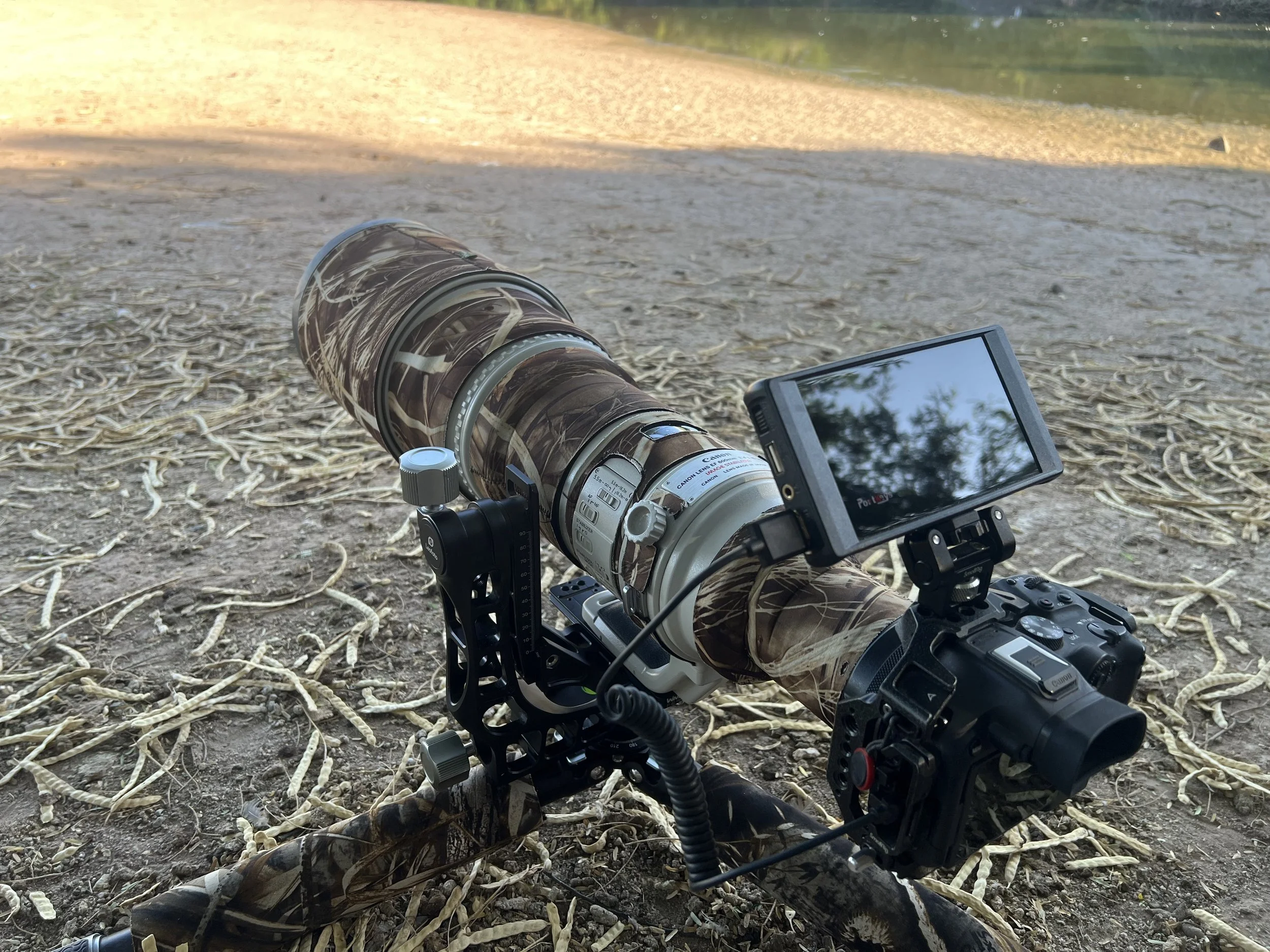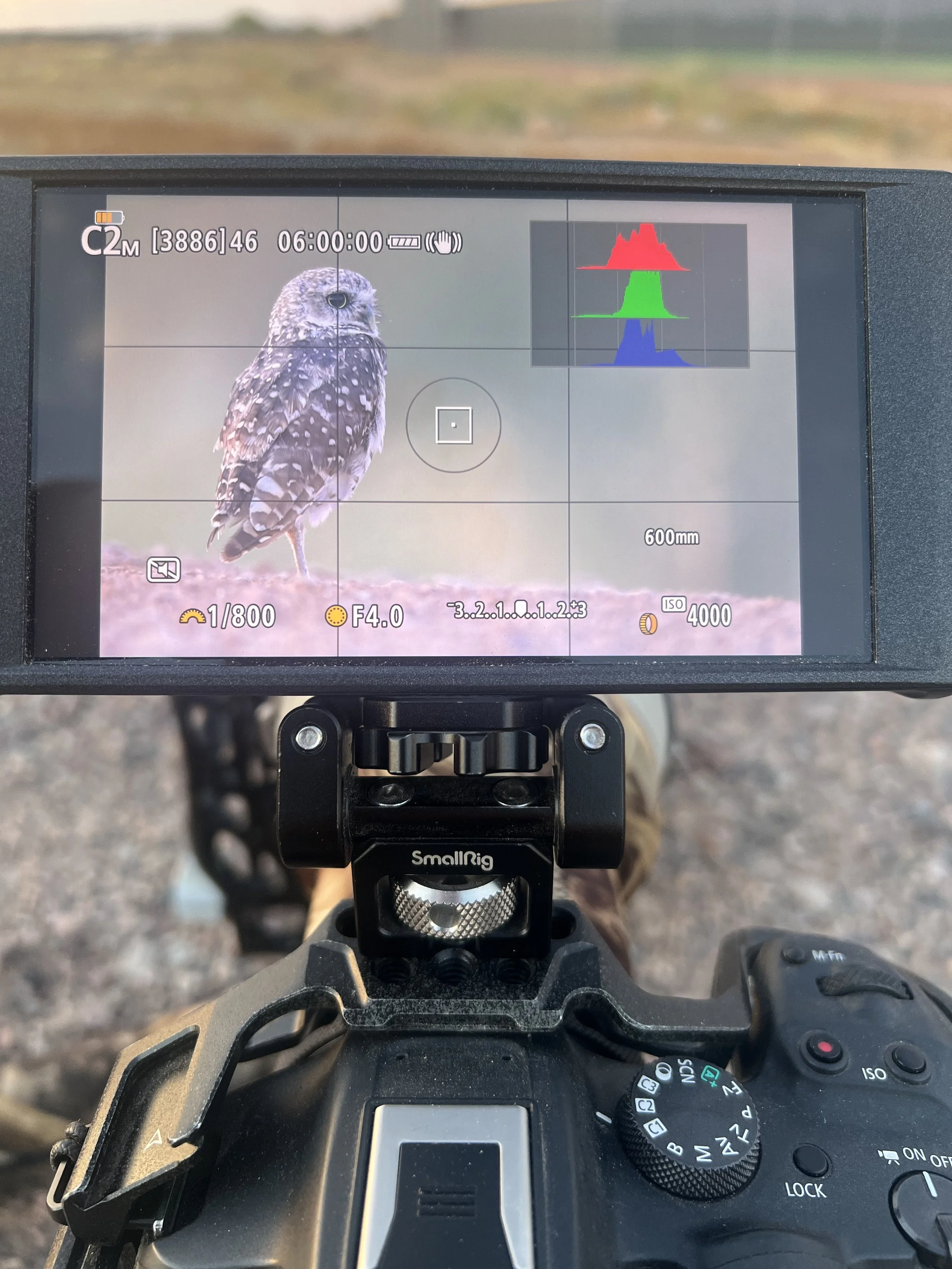Enhancing My Photography with the PortKeys PT-6 External Monitor: A Review
As a wildlife photographer, I often find myself in challenging positions to capture the perfect shot. One of the most demanding aspects of my work is shooting at very low angles. This typically involves laying on my belly to get the right perspective, which can be quite uncomfortable over long periods. To improve my shooting experience, I decided to research and purchase an external monitor that could attach to the top of my camera. This decision has allowed me to sit comfortably on the ground behind my camera, eliminating the need for constant prone positioning.
Why an External Monitor?
I've never been a fan of the way Canon's rear LCD screens adjust. On my Canon R7, the small display, especially when positioned off to the side, doesn't provide an optimal viewing experience for me. An external monitor promised a more flexible and comfortable shooting process, so I set out to find the right one. After thorough research, I chose the PortKeys PT-6 external monitor.
Technical Specifications of the PortKeys PT-6
Before diving into my experience with the PT-6, let's take a look at its technical specs:
Display Size: 5.2 inches
Resolution: 1920x1080
Brightness: 500 nits
Weight: 200 grams
Input: HDMI
Power Source: Compatible with Canon LP-E6 batteries
Additional Features: 3D LUT support, False color, Histogram, Zebra stripes
Reasons for Choosing the PortKeys PT-6
Several factors led me to choose the PT-6 over other external monitors:
1. Lightweight: At just 200 grams, the PT-6 adds minimal weight to my setup. This is crucial for maintaining balance and ease of movement, especially when I'm out in the field for extended periods.
2. Cost: The PT-6 offers a fantastic balance between cost and features. It provides high-end functionality without breaking the bank, making it a great value for money.
3. Compatibility with Canon Batteries: The ability to use Canon LP-E6 batteries was a significant advantage. Since I already own multiple LP-E6 batteries for my camera, I didn't need to invest in additional power sources, which saved both money and hassle.
4. Protective Carrying Case: The monitor comes in a hard plastic carrying case, which offers excellent protection during transport and storage.
Mirrorless and DSLR Compatibility
I use a Canon R7 mirrorless camera, and this setup works extremely well with a mirrorless camera system. The PT-6 allows me to take full advantage of my camera's features and flexibility. Mirrorless cameras, like the Canon R7, have the advantage of using an electronic viewfinder (EVF) or the rear LCD screen to display exactly what the sensor sees. This real-time view includes exposure settings, focus points, and other critical information, making it seamless to use with an external monitor like the PT-6.
While this monitor can also be used with a DSLR, it's essential to note that you must be shooting in live view mode. Traditional DSLR viewfinders use an optical system that reflects light through the lens up to the viewfinder via a mirror. This system does not allow for an external monitor display because it doesn't provide a continuous video feed from the sensor. In live view mode, the DSLR flips the mirror up and uses the main sensor to capture and display the image directly on the camera's LCD screen. This mode allows the camera to output a continuous video feed to the external monitor, providing a real-time view of your composition and settings, enhancing your shooting experience.
Mounting and Setup
Although the PT-6 comes with the necessary cables and a hotshoe mount, I opted to attach it to my camera using a SmallRig Black Mamba cage. The reason for this choice was my discomfort with constantly sliding the hotshoe mount in and out of my camera's hotshoe on a daily basis. The SmallRig mount screws into the bottom of the monitor and then into a spot on top of the cage, providing a more secure and convenient mounting solution.
Real-World Experience
My real-world experience with the PortKeys PT-6 has been excellent. Setting up the monitor is straightforward, and its interface is user-friendly. The brightness of the display is good overall, allowing me to see clear and vibrant images even in bright outdoor conditions. The size of the monitor allows me to display my camera's histogram while still being able to see a good amount of what the screen displays, which is incredibly helpful for exposure management.
Pros and Cons
Pros:
Cost: Offers high-end functionality at an affordable price.
Ease of Use: User-friendly setup and interface.
Dependabiliy: Robust build quality and reliable performance.
Compatibility: Uses Canon LP-E6 batteries, which I already own.
Cons:
No Touch Screen Functionality: Controls the camera via HDMI cable, lacking direct touch screen controls.
Brightness: Although I primarily shoot in the early morning hours, the monitor could be brighter. It becomes challenging to use in direct sunlight.
Conclusion
The PortKeys PT-6 external monitor has significantly enhanced my photography experience. It has addressed the discomfort of shooting at low angles and provided a better viewing experience than my camera's built-in screen. With its lightweight design, cost-effectiveness, and compatibility with Canon batteries, the PT-6 is an invaluable tool in my photographic arsenal. For any photographer looking to improve their low-angle shooting or simply seeking a better external display, I highly recommend the PortKeys PT-6.



